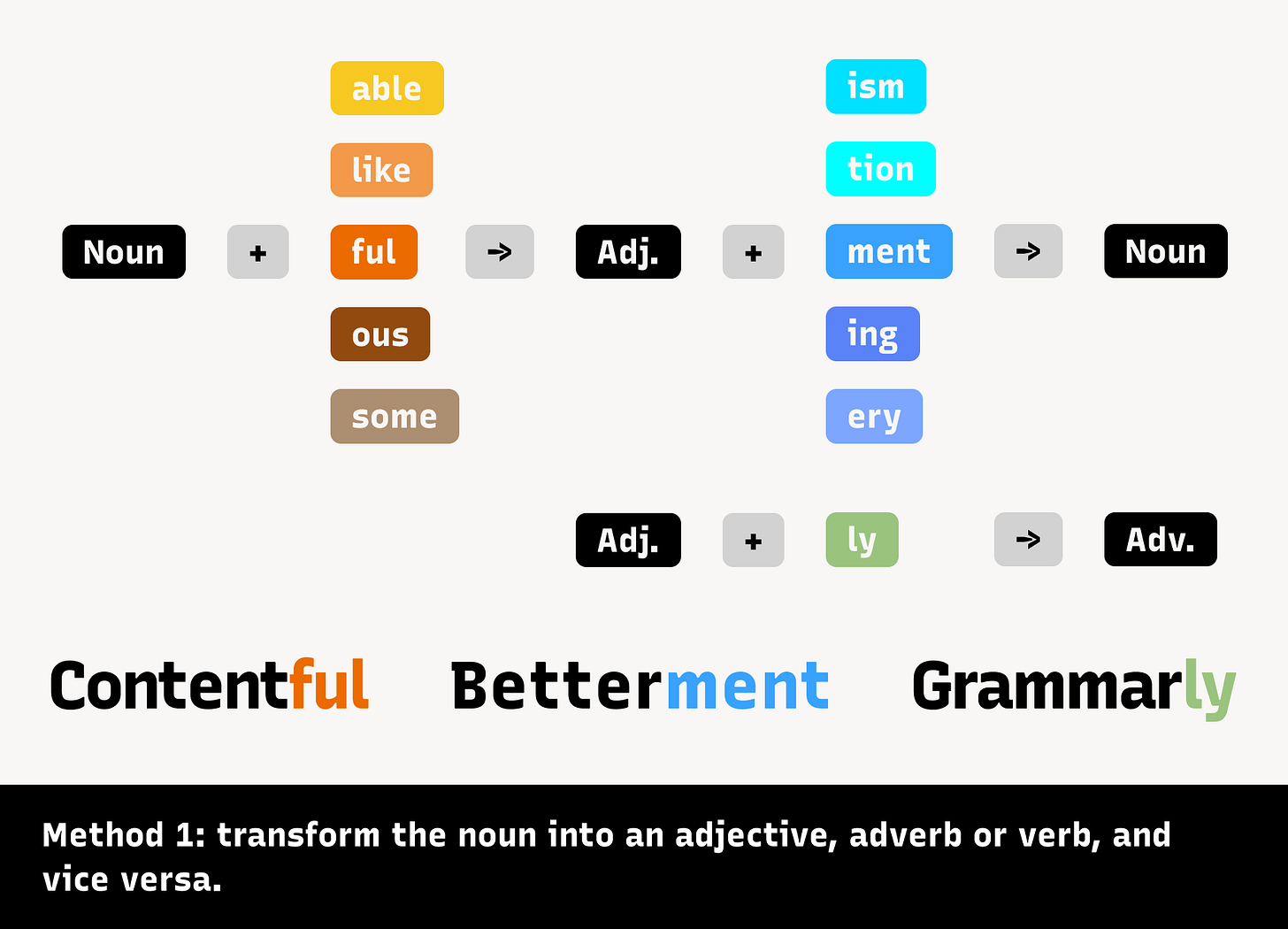Five Methods to “Brandify” a Name
Week 48 of Founding Typogram
Thanks for reading my newsletter. Subscribe for free to get weekly updates about my start-up journey!
Last week, I wrote about a creative process to name a brand. It has four steps:
Write down seed words based on your business idea
Make these words unique and ownable as a brand name using different methods
Due diligence
Create a scoring rubric and rank these brand names.
The key to success lies in step 2, where the magical transformation happens — a common word that one can find in a dictionary transforms into a memorable, impressive, one-of-a-kind brand name. What are these methods?
Method 1: transform the noun into an adjective, adverb or verb, and vice versa.
We can add adjective or adverb suffixes to make a new word out of the noun. It is more ownable as a brand since the word doesn’t exist in the dictionary. Because it is based on a real word and standard grammar rules, it is easy to piece together what it means and remember how to spell it.
Examples: Grammarly, Typely, Typefully, Contentful, Shopify, Spotify
The opposite can also be done, although less common — add noun suffixes to transform an adjective into a noun.
Example: Betterment
Method 2: remove “non-essential” letters in the word, such as vowels.
This method is so widely used that it has become a trend! Some vowel letters, especially the letter ‘e’, is very insignificant in terms of pronunciation, so why not drop them? The minimalist approach transforms an everyday word into a unique brand name without changing the pronunciation (for the most part).
Example: Flickr, Rdio, Tumblr, Scribd, Pixlr, GVE,
Method 3: Mis-spell the word, such as spell c with k or q, ph with f, i with y, s with z, etc.
Similar to dropping the vowel, the idea behind this method is also to alter the spelling without changing the pronunciation.
Example: Lyft, Disqus
Method 4: Combine two words
While one word from a dictionary may not be ownable, joining two together could be unique enough to become ownable. You can join a verb and a noun, an adjective and a noun, or just two nouns. This method is the most commonly used.
Example: Facebook, Paypal, Skyscanner, Priceline, Firebase, Coinbase, Wealthfront, Home Depot, Instant Pot
Method 5: Combine a partial word (a word root) and a word
Similar to combining two words, this method play around joining two name ideas together, but with a twist. Incorporating a partial word, usually a word root, like -gram or insta-, allows us to present two ideas in a much shorter format.
For the longest time, I thought Instant Pot was called InstaPot because the latter is shorter, punchier, and conveys the same meaning — a pot that cooks instantly.
Example: Instagram, Instabase, Ubisoft, Microsoft, Netflix, Skype
Hear from You
Do you see other patterns to convert a common everyday word into a unique brand-worthy name? Let me know. I am collecting more and hopefully making them into a free resource for new entrepreneurs.
❧
See you next week! If you have friends who are interested in founding startups, please consider sharing my newsletter with them!








